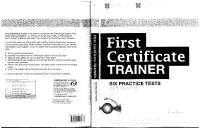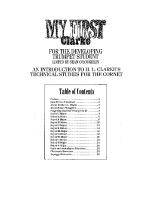Employee First [PDF]
1. Background of the Company. As one of the largest companies in India, HCL sells various information technology product
40 1 43KB
Papiere empfehlen
![Employee First [PDF]](https://vdoc.tips/img/200x200/employee-first.jpg)
- Author / Uploaded
- anon_806011137
Datei wird geladen, bitte warten...
Zitiervorschau
1. Background of the Company. As one of the largest companies in India, HCL sells various information technology product services, such as laptop, custom software development, and technology consulting. Like its competitors, HCL had excess employees and had suspended raises. But HCL kept its promise and didn’t lay off any HCLite (Nayar’s name for HCL employees). As business has picked up, however, employees begin looking at competitors’ job offers. HCL Technologies is headquartered in the world’s largest democracy, so it’s quite fitting that the New Delhi–based company is attempting a radical experiment in workplace democracy. CEO Vineet Nayar is committed to creating a company where the job of company leaders is to enable people to find their own destiny by gravitating to their strengths. Through a forum called U&I (You and I), Nayar fielded more than a hundred questions from employees every week
2. Background of the Case “Employees first.” That’s the most important and crucial cultural value that HCL Technologies CEO Vineet Nayar believes will take his company into the future. Although most managers think that customers should come first, Nayar’s philosophy is that employee satisfaction needs to be the top priority.As we discussed in the chapter opener, one thing that Nayar has done is to pioneer a culture in which employees are first. What has he done to put employees first? Part of the cultural initiative dealt with the organization’s structure. HCL inverted its organizational structure and placed more power in the hands of frontline employees, especially those in direct contact with customers and clients. It increased its investment in employee development and improved
communication through greater transparency. Employees were encouraged to communicate directly.
3. Main Problem of the Case Does the unique “employees first” culture at HCL Technologies attract unique employees?
15-17. What is your impression of an “employees first” culture? Would this work in other organizations? Why or why not? What would it take to make it work?
For me, my impression of an “employees first” culture is the benefits. As the culture enthuses, empower, and encourages employee across the organization to come up with innovative solutions to operational and customer business challenges. It depends on each type of organization, size and its employee’s behavior. For instance, a company that has a strategy focusing on customers will not be suitable with the culture. Some employees do not find advantages of this culture and feel not being motivated in working. To make it work maybe employee’s behavior or a change in the basic and strategy that fits with the culture.
15-18. How might an understanding of organizational behavior help CEO Vineet Nayar lead his company? Be specific. How about first-line company supervisors? Again, be specific. CEO Vineet Nayar help lead his company through understanding of organization behavior because it is the study how individuals and groups behave within an organization and applying such knowledge in improving the effectiveness of an organization. The CEO has idea about motivating his workforce. He realizes not all employees may share his personality and attitude toward work. The trust pay implemented by HCL may motivate some employee who actually like this culture and benefit from his variable pay. Improving productivity and higher performance. For first-line managers fight different types of battles and deal with a different types of employee than top managers.
15-19. What aspects of personality do you see in this story about HCL? How have the personality traits of HCL employees contributed to make HCL what it is?
The aspects of personality that I see in this story about HCL is enterprising which prefer verbal activities that offers opportunities to influence others and attain power. The personality traits of HCL employees contributed to make HCL are sensitive to changes, creative to generate new ideas and risk-taking. Sensitive to changes in a way that they responds as a need to the relative change occurring in the environment. Creative to generate new ideas in which how accurate the employees’ mind function to find solutions. Risk-taking is where the employees take necessary actions for the company’s success or loss in certain decision makings.
15-20. Design an employee attitude survey for HCL’s employees. For me, it would be attitudes such as job satisfaction, organizational commitment, and organizational citizenship behaviors in the survey items. With the programs proposed by the CEO, Mr. Nayar, the attitudes of employees should be high. However, something to consider is the concern over high turnover mentioned in the opening case. High turnover may be indicative of poor employee attitudes toward the organization and low morale.









